
Amphibians Around Las Vegas, Wildlife Around Las Vegas
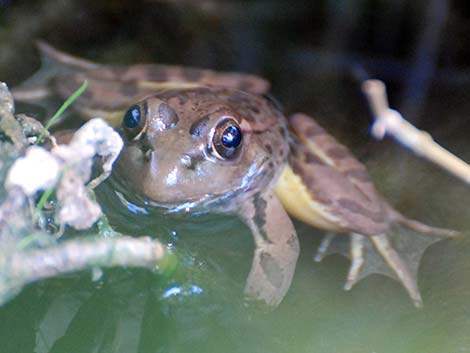 |
General Description: Relict Leopard Frogs (Lithobates onca) are medium sized, slender, brown or green frogs with a few, irregular dark spots that have light edges. A light-colored ridge on each side of the body (dorsolateral fold) extends from the eye to the groin. The eardrum is small and has a light spot in the center. Taxonomy: Order Frogs and Toads (Anura); Family True Frogs (Ranidae); formerly Rana onca. Technical Description: Body size medium (2-5 in.), slender. Dorsal color brown or green. Dorsum with a few dark spots that have light edges. A light-colored ridge on each side of the body extends from the head to the groin, and there is a light-colored stripe on the upper jaw. Eardrum large, with a light spot in the center. |
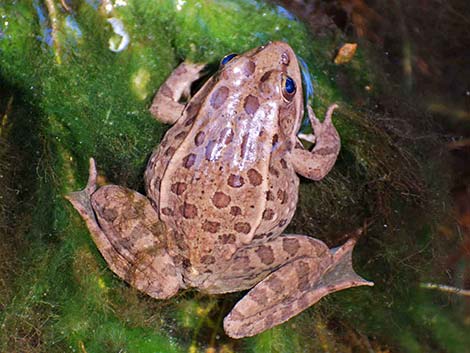 |
Diet: Aquatic and flying insects. Habitat: Desert riparian habitats along permanent streams, springs, and water impoundments up to 2,500 ft elevation. Range: Isolated populations in southeastern Nevada and northwestern Arizona. Endemic to eastern Clark County along the Virgin and Colorado rivers. Refuge populations introduced into several springs within their historical range. |
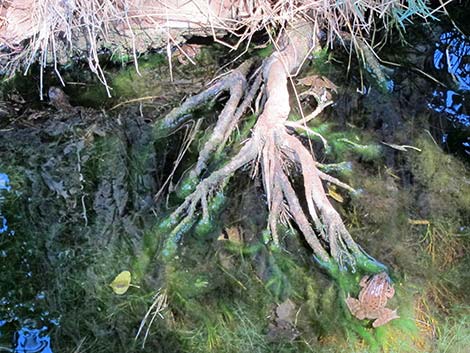 |
Breeding: Breeds in late spring and early summer. Egg masses are attached to submerged vegetation or laid on the bottom. Similar Species: In this species of leopard frog, the spots are faint, irregular, and indistinct relative to those on other leopard frogs. Bullfrogs have very large eardrums and lack dorsolateral folds. Leopard frogs do not have the "warts" of the toads that live in the same habitat, and leopard frog tadpoles grow to about 3-inches long (much larger than toad tadpoles). Comments: Primarily nocturnal. These frogs are quite rare and have been considered for listing as Endangered or Threatened. People are working to restore this species to the historical range using captive breeding and transplanting. As shown by these frogs, at least some of their work is paying off. |
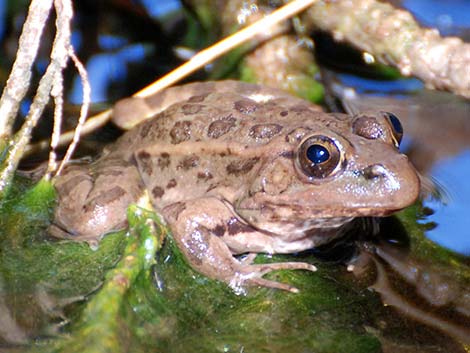 |
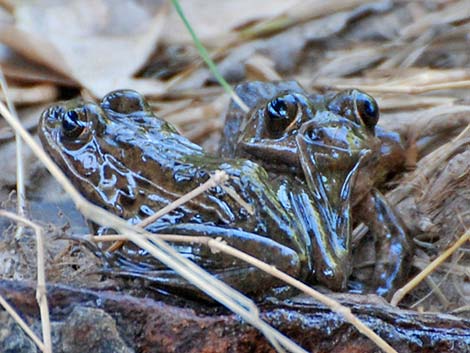 |
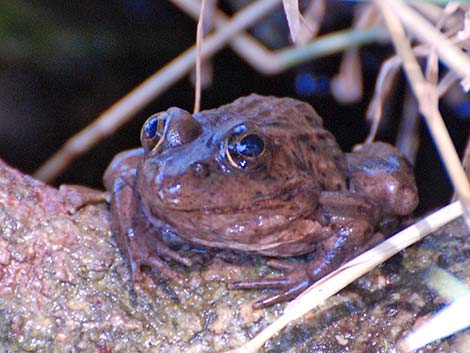 |
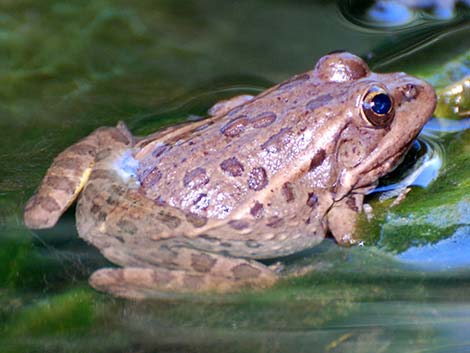 |
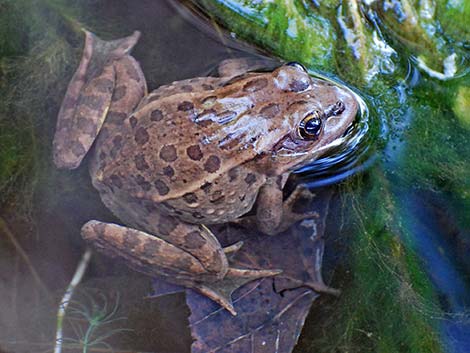 |
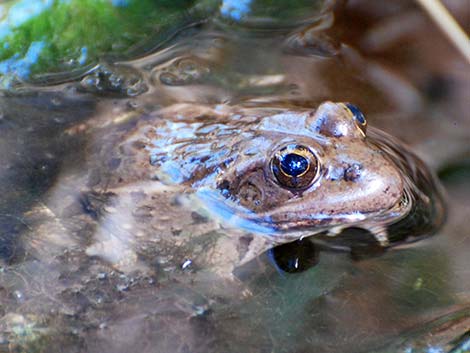 |
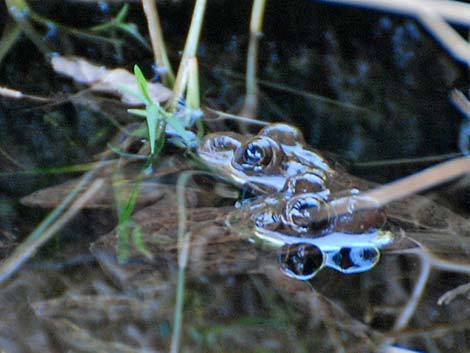 |
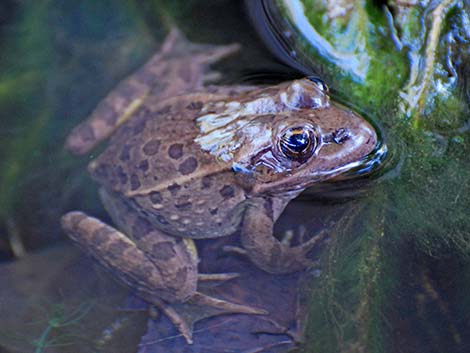 |
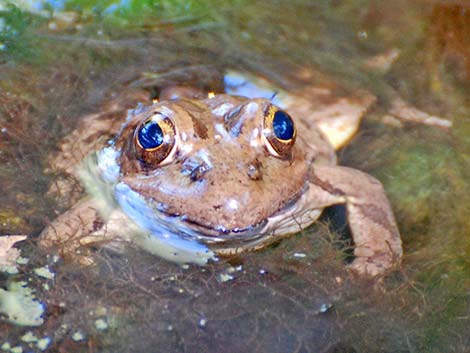 |
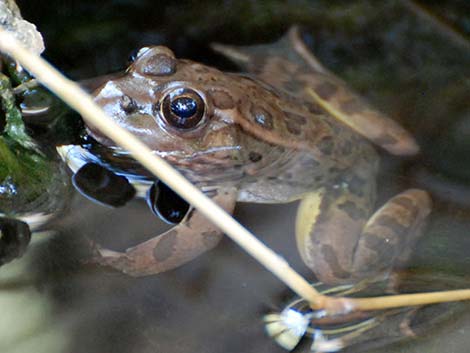 |
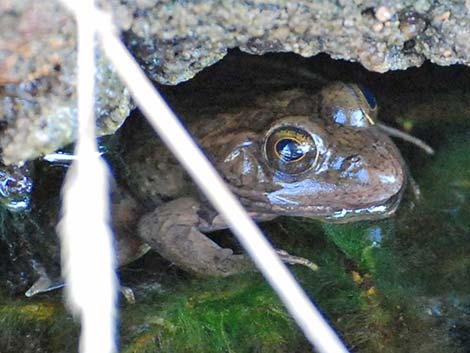 |
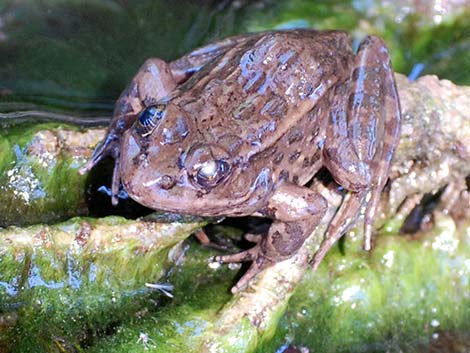 |
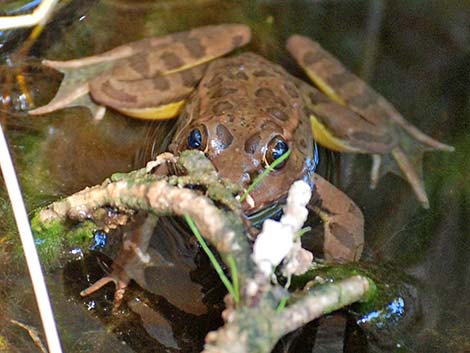 |
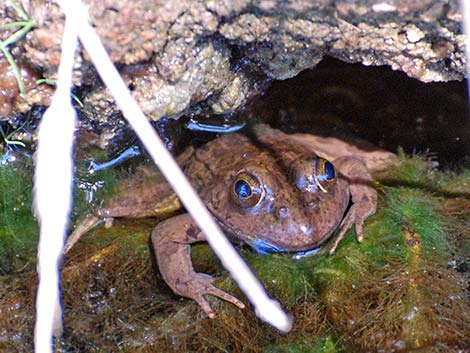 |
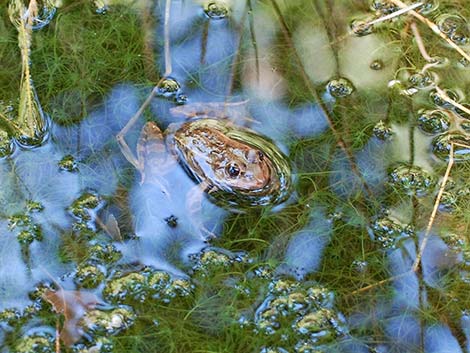 |
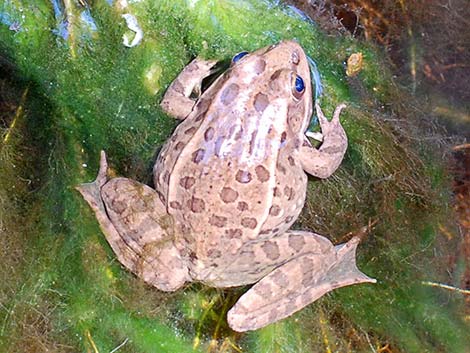 |
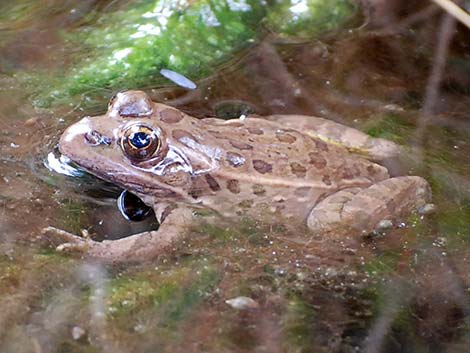 |
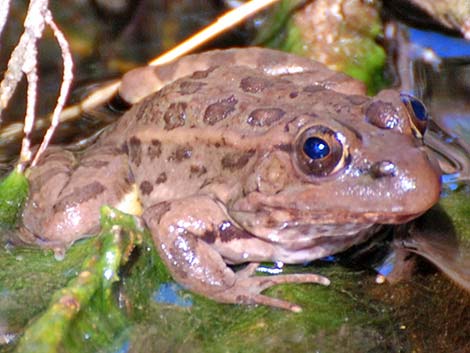 |
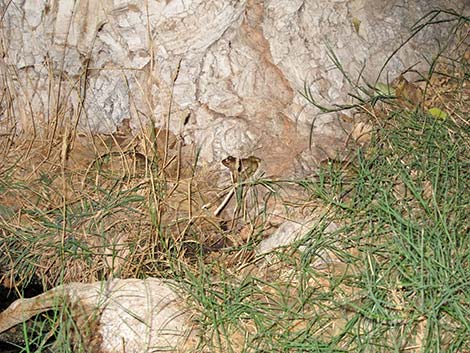 |
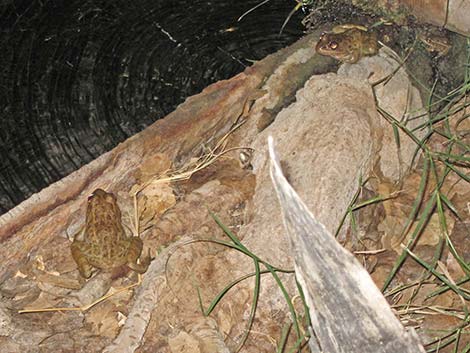 |
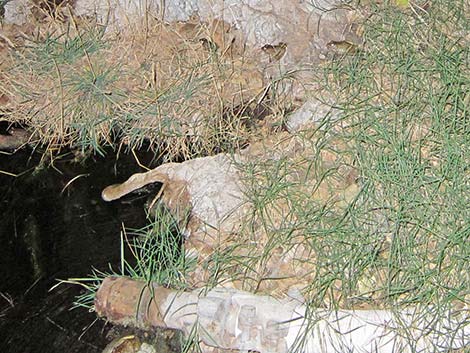 |
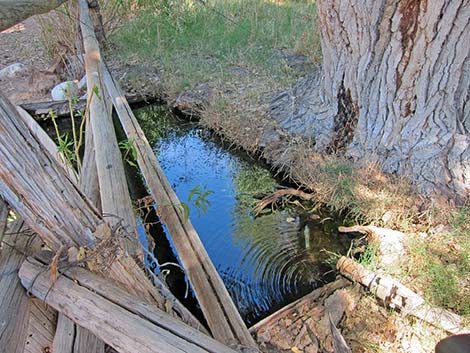 |
Note: All distances, elevations, and other facts are approximate.
![]() ; Last updated 220909
; Last updated 220909
| Amphibians Around Las Vegas | Wildlife Around Las Vegas | Glossary | Copyright, Conditions, Disclaimer | Home |